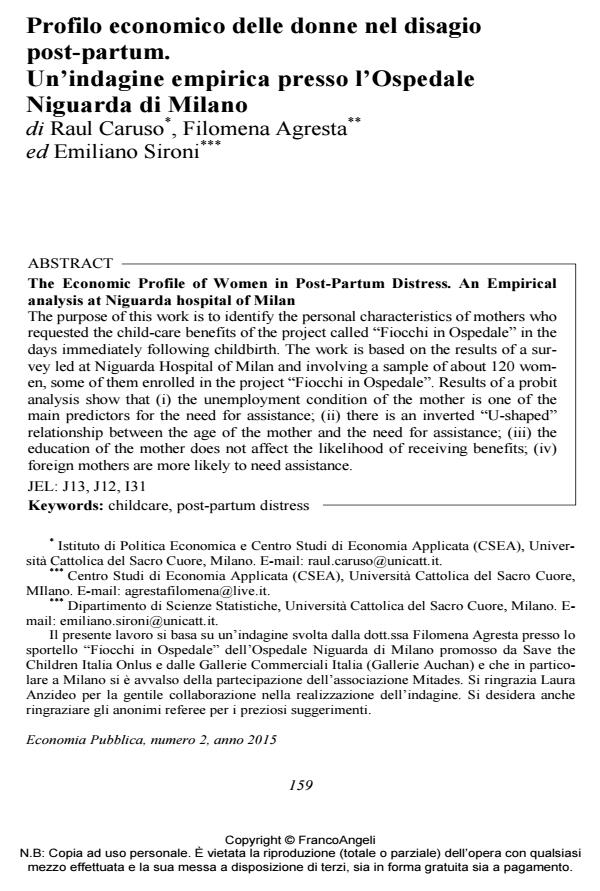Profilo economico delle donne nel disagio post-partum. Un’indagine empirica presso l’Ospedale Niguarda di Milano
Titolo Rivista ECONOMIA PUBBLICA
Autori/Curatori Raul Caruso, Filomena Asgresta, Emiliano Sironi
Anno di pubblicazione 2016 Fascicolo 2015/2
Lingua Italiano Numero pagine 22 P. 159-180 Dimensione file 218 KB
DOI 10.3280/EP2015-002005
Il DOI è il codice a barre della proprietà intellettuale: per saperne di più
clicca qui
Qui sotto puoi vedere in anteprima la prima pagina di questo articolo.
Se questo articolo ti interessa, lo puoi acquistare (e scaricare in formato pdf) seguendo le facili indicazioni per acquistare il download credit. Acquista Download Credits per scaricare questo Articolo in formato PDF

FrancoAngeli è membro della Publishers International Linking Association, Inc (PILA)associazione indipendente e non profit per facilitare (attraverso i servizi tecnologici implementati da CrossRef.org) l’accesso degli studiosi ai contenuti digitali nelle pubblicazioni professionali e scientifiche
The purpose of this work is to identify the personal characteristics of mothers who requested the child-care benefits of the project called "Fiocchi in Ospedale" in the days immediately following childbirth. The work is based on the results of a survey led at Niguarda Hospital of Milan and involving a sample of about 120 women, some of them enrolled in the project "Fiocchi in Ospedale". Results of a probit analysis show that (i) the unemployment condition of the mother is one of the main predictors for the need for assistance; (ii) there is an inverted "U-shaped" relationship between the age of the mother and the need for assistance; (iii) the education of the mother does not affect the likelihood of receiving benefits; (iv) foreign mothers are more likely to need assistance.
Parole chiave:Childcare, post-partum distress
Jel codes:J13, J12, I31
Raul Caruso, Filomena Asgresta, Emiliano Sironi, Profilo economico delle donne nel disagio post-partum. Un’indagine empirica presso l’Ospedale Niguarda di Milano in "ECONOMIA PUBBLICA " 2/2015, pp 159-180, DOI: 10.3280/EP2015-002005